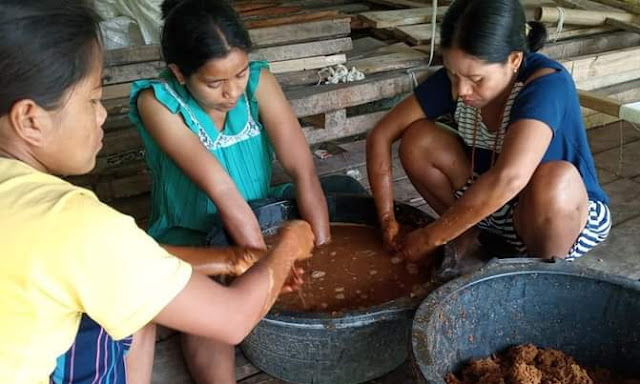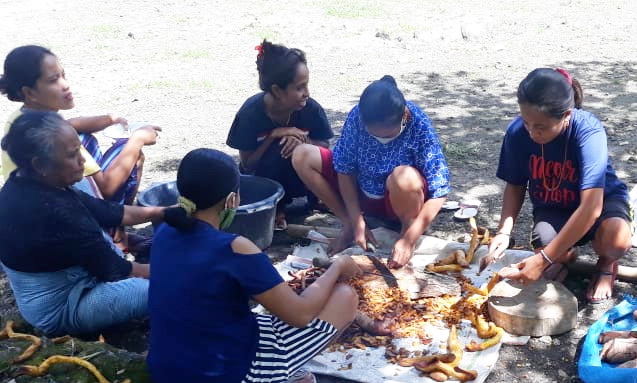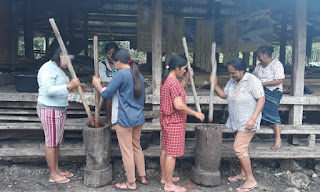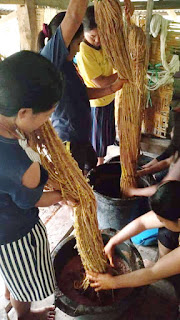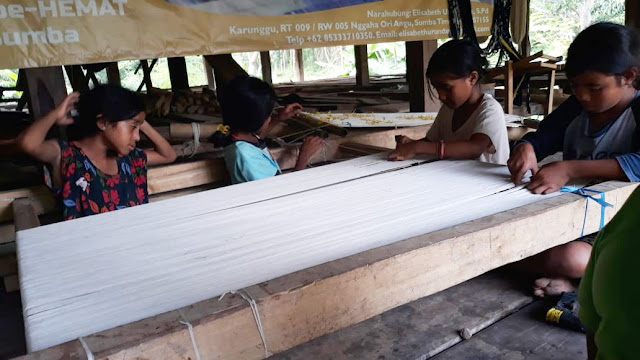Coloring Process Using Noni Root (Kombu)
Wednesday, 17 February 2021by Elisabeth Uru Ndaya
By: Elisabeth Uru Ndaya
On Tuesday (16/02/2021), the Stube-HEMAT weaving group carried out a particular activity than before. In the previous week, they oiled the threads, this time they enter the stage of coloring using Noni root (kombu). The process itself attracts their attention because they have to use extra energy to pound a large number of noni roots and skin and it started at 09.00 am until 06.00 pm. Some of them cut the noni skin into small pieces, and some others pounded and squeezed the crushed noni roots.
The Noni’s small roots produce a red color. For better results, noni with small leaves and roots is used. The roots are mixed with skin and loba (Soka) leaves which are pounded and mixed to get a better red color. The kombu roots are cut into small pieces and then put into a mortar and pounded using a pestle, then mixed with the skin and loba leaves then squeezed for the liquid. After that, the coloring process for red was done by dipping the hemba / soaking cloth into the kombu mixture for 2-3 times. It took 1-2 nights and then dried under the sun until the cloth is completely dry. The work of coloring with noni is called kombu and the worker is called makombu.
The participants of the weaving group were very enthusiastic to follow and complete the stages of cloth coloring. With their strong spirit of togetherness and curiosity, they left away their fatigues. They got many impressions from the beginning until the coloring stage. May Nggiri, one of the weaving group participants admitted that she appreciated the efforts of the weavers who had already done weaving. "It is reasonable if the price of the original woven cloth from East Sumba is very expensive because the process takes time and requires extra energy," she commented.
In the middle of the activity, some Sunday school children showed their enthusiasm in learning to weave. Mama Yustina, the trainer invited them to bundle the thread, as the first step of the learning process. This is a good step to prepare the next weavers generation. The enthusiasm of the youth and their mothers inspires Sunday school children too.
While waiting for the colored weaving thread to dry, the participants learned deeper about the variety of motif designs that exist in East Sumba. The motif itself becomes a parameter of the splendor of woven cloth. Therefore, it is important for the beginner group to learn more about the East Sumba weaving motifs, so that they can create their region-based weaving motifs. ***
